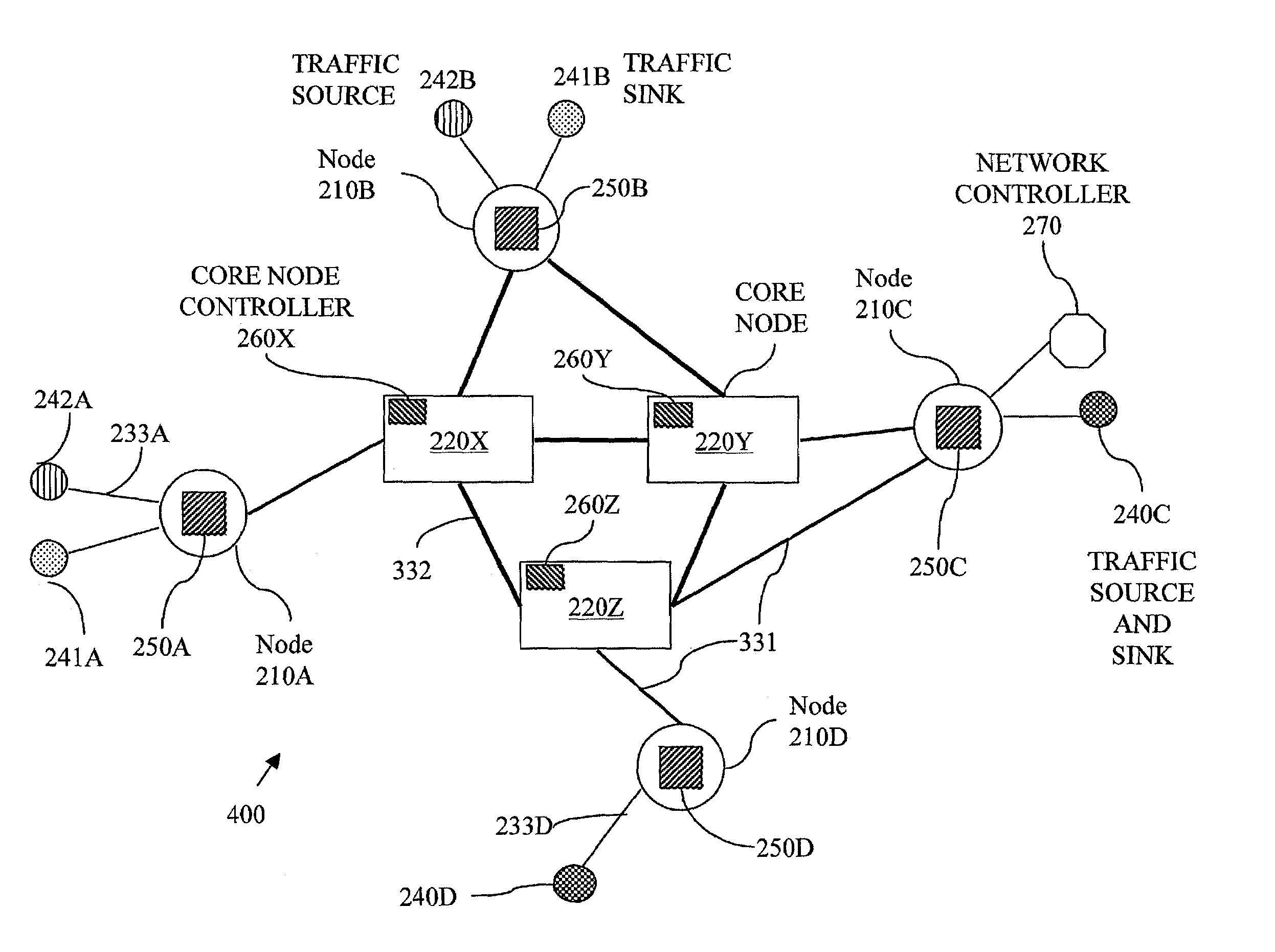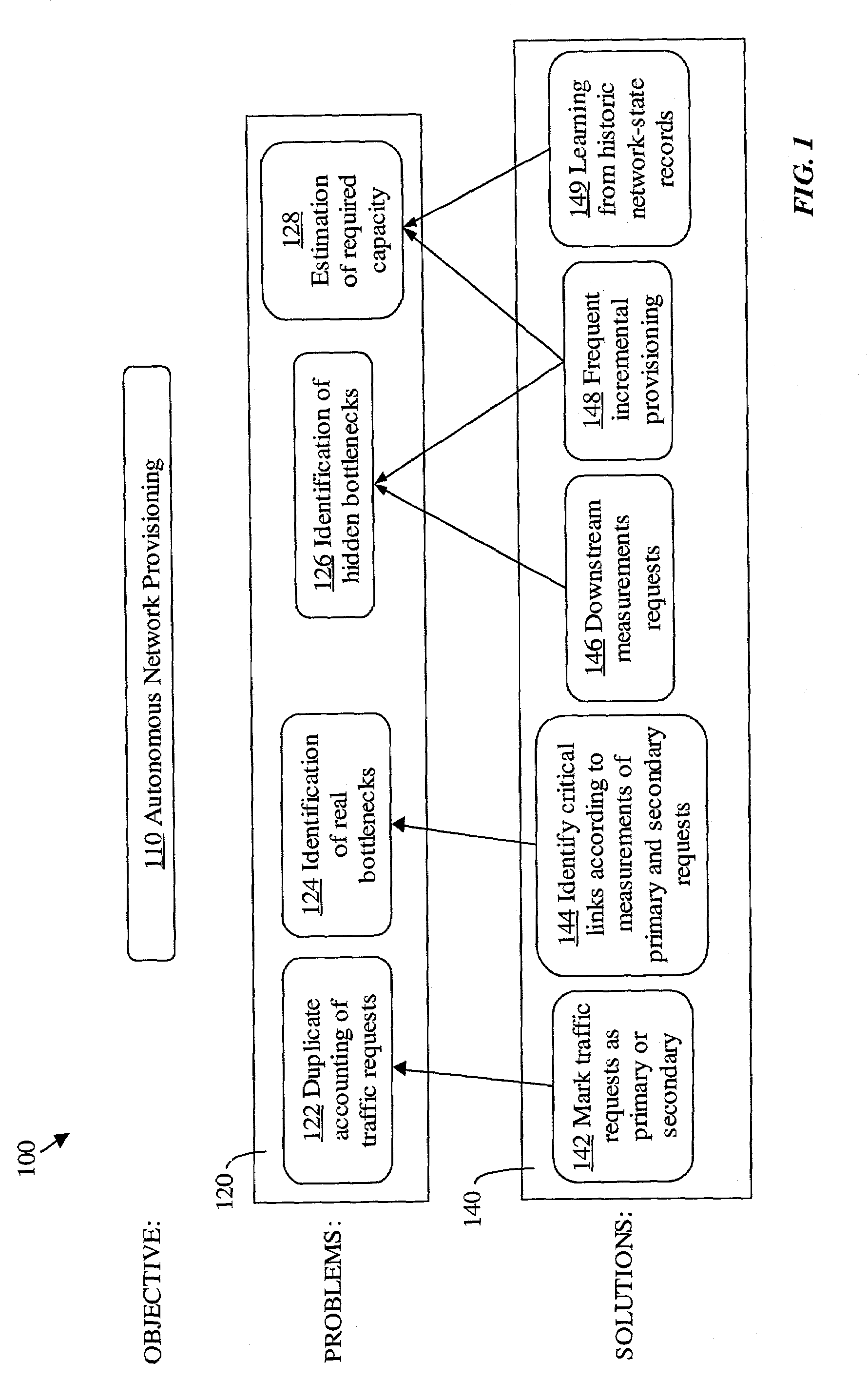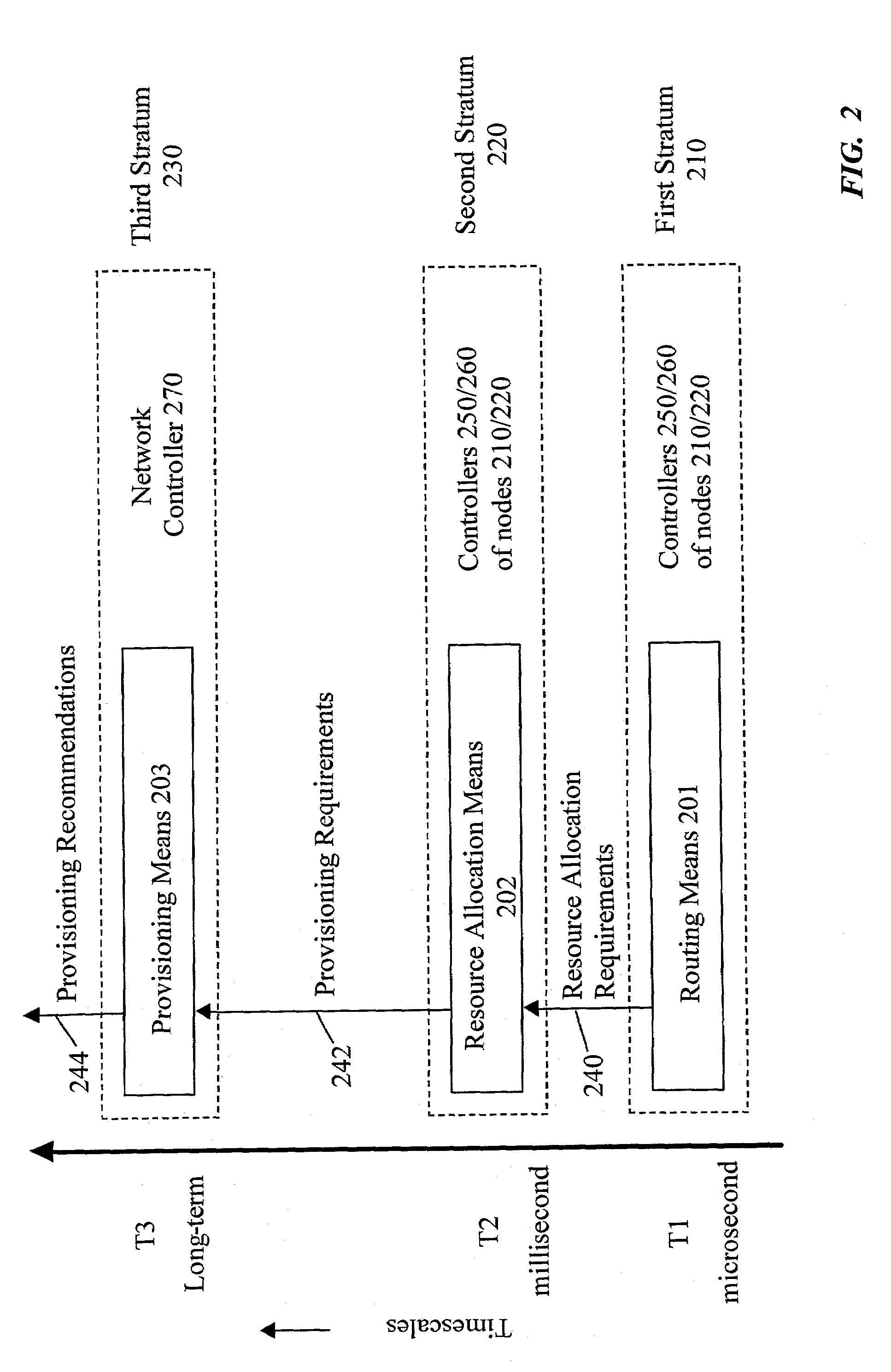Technique for autonomous network provisioning
a technology of autonomous network provisioning and network provisioning, applied in the field of communication networks, can solve the problems of difficult microscopic and macro-level characterization, the conditions applicable to telephone networks do not necessarily apply to fast-evolving data networks, and the inability to accurately characterization the traffic at microscopic and macro-levels in rapidly evolving data networks
- Summary
- Abstract
- Description
- Claims
- Application Information
AI Technical Summary
Benefits of technology
Problems solved by technology
Method used
Image
Examples
Embodiment Construction
[0035]Various problems may be encountered in automated provisioning procedures that rely on measurements in a network that employs alternate routing. FIG. 1 illustrates main problems 120 and a solution map 100 in accordance with an embodiment of the present invention. Examples of problems 120 may include possible duplicate accounting of requests for traffic connections, called herein as traffic requests 122 where two or more routes are considered for the same traffic request; identification of real bottlenecks 124; identification of hidden bottlenecks 126; estimation of required capacity 128 and others. An embodiment of the present invention offers specific solutions 140 to problems 120. A network to be provisioned may include alternate routing capabilities, route-sharing capabilities, and capacity allocation capabilities, thus representing a highly general type of network.
[0036]An autonomous network provisioning aspect 110 of the present invention provides a network capable of dete...
PUM
 Login to View More
Login to View More Abstract
Description
Claims
Application Information
 Login to View More
Login to View More - R&D
- Intellectual Property
- Life Sciences
- Materials
- Tech Scout
- Unparalleled Data Quality
- Higher Quality Content
- 60% Fewer Hallucinations
Browse by: Latest US Patents, China's latest patents, Technical Efficacy Thesaurus, Application Domain, Technology Topic, Popular Technical Reports.
© 2025 PatSnap. All rights reserved.Legal|Privacy policy|Modern Slavery Act Transparency Statement|Sitemap|About US| Contact US: help@patsnap.com



